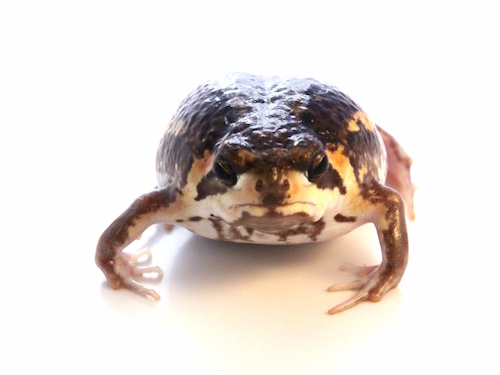Get Your Hands on a Rain Frog for Sale: Experience the Happiness of Special Pet Dog Possession!
Get Your Hands on a Rain Frog for Sale: Experience the Happiness of Special Pet Dog Possession!
Blog Article
The Most Effective Reptile Enclosures: Exactly How to Produce the Perfect Environment
Developing the perfect habitat for reptiles is not nearly placing them in a tank or room; it involves a thoughtful consideration of various variables that add to their total well-being. From the size of the enclosure to the kind of substrate made use of, every component plays an essential role in supplying a setting where your reptile can thrive. By understanding the specific requirements of your reptile species and executing the best habitat setup, you can ensure their health and joy in bondage.
Picking the Right Room Size
When selecting an enclosure dimension for reptiles, it is important to consider their natural behaviors and room needs to ensure their well-being and health. Various reptile types have varying needs when it involves environment space. Arboreal species like chameleons or tree serpents need vertical room for climbing and perching, while terrestrial types such as bearded dragons or leopard geckos require more flooring area for exploring and thermoregulation. Marine turtles like red-eared sliders require enclosures with both water and acreage for swimming and basking.
A basic policy of thumb is to provide ample space for the reptile to display all-natural actions, such as basking, concealing, climbing up, and foraging. By carefully considering the particular requirements of the reptile varieties in inquiry, proprietors can create an appropriate and improving environment that advertises total health and urges all-natural actions.
Establishing Correct Home Heating Components
To make sure the wellness and health of reptiles in their units, it is crucial to meticulously set up proper home heating aspects. When setting up home heating aspects in a reptile enclosure, it is critical to think about the particular temperature level demands of the species you are caring for.
One reliable and typical heating aspect for reptile enclosures is a warmth lamp or ceramic warmth emitter. These heat resources can be utilized to develop a temperature slope within the room, allowing reptiles to relocate in between warmer and cooler areas as required. Additionally, under-tank hot pad or warm floor coverings can be utilized to give tummy warmth, which is especially valuable for reptiles that need added warmth to aid in food digestion.
Keeping an eye on the temperature level within the enclosure utilizing a thermometer is necessary to ensure that the burner are keeping the ideal temperature variety for your reptile. Regularly examine and adjust the heating components as required to develop a healthy and comfortable atmosphere for your flaky close friend.
Selecting Appropriate Lighting Fixtures

Offering the Suitable Substratum
Picking the appropriate substrate is vital for developing a suitable and comfortable environment for reptiles in their rooms. The substrate serves different functions, consisting of giving a structure for all-natural actions like delving, aiding in maintaining appropriate humidity levels, and offering a comfortable surface for the reptile to rest upon - rain frog for sale. When choosing a substrate for your reptile enclosure, it is crucial to consider the species-specific needs of your pet. Some reptiles, such as desert-dwelling species like bearded dragons, thrive on substrates like calcium sand or reptile carpeting, while others, like round pythons, favor coconut husk or aspen bed linens to keep moisture levels.
Avoid substratums that can cause impaction, such Our site as loosened substrates like sand or crushed rock, especially for reptiles understood to consume their bed linen. Regularly cleaning and changing the substrate is essential to guarantee a sanitary and tidy environment for your reptile.
Designing for Enrichment and Comfort
Thinking about the substratum's role in giving a foundation for natural actions and maintaining an appropriate setting, enhancing the reptile room with correct decorations is vital for both enrichment and comfort. Decorations such as branches, rocks, hideouts, and man-made plants not just create a much more aesthetically enticing habitat but likewise offer useful purposes. Branches supply climbing up possibilities for arboreal species, while rocks can serve as basking areas for heat. Hideouts supply shelter and safety, minimizing stress and anxiety levels for the reptile. Synthetic plants not only improve the appearances but also offer hiding areas and enrichment by enabling the reptile to discover and engage with its environment. When enhancing the unit, it is important to consider the reptile's species-specific demands and habits to produce a space that advertises psychological and physical well-being. By including a selection of decors that mimic the reptile's all-natural great post to read environment, proprietors can see this website guarantee their family pet's comfort and promote their natural instincts, ultimately leading to a better and much healthier reptile.
Conclusion

Creating the best environment for reptiles is not simply about putting them in a container or unit; it entails a thoughtful consideration of various variables that contribute to their general well-being.Choosing the suitable substrate is essential for creating a suitable and comfortable atmosphere for reptiles in their rooms. Some reptiles, such as desert-dwelling types like bearded dragons, grow on substratums like calcium sand or reptile carpeting, while others, like ball pythons, prefer coconut husk or aspen bedding to preserve humidity degrees.
By including a selection of decors that resemble the reptile's all-natural environment, proprietors can guarantee their family pet's convenience and promote their all-natural impulses, eventually leading to a happier and healthier reptile.
In conclusion, creating the optimal habitat for reptiles involves selecting the appropriate enclosure dimension, home heating elements, lighting fixtures, substrate, and decorations.
Report this page